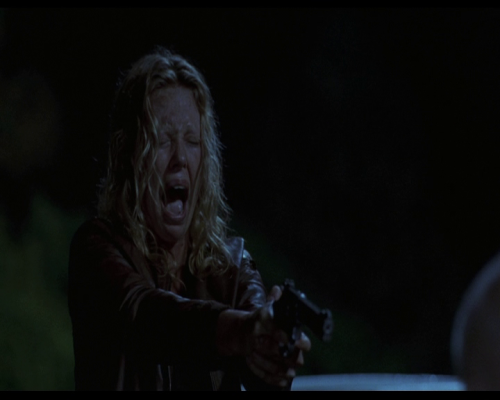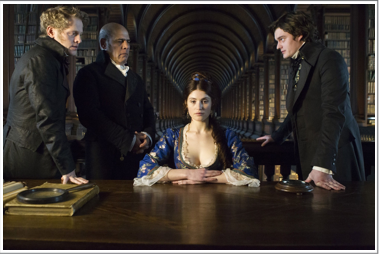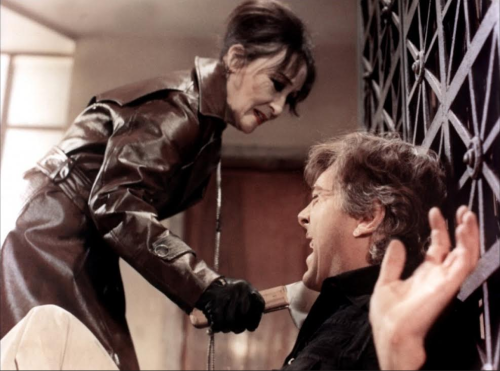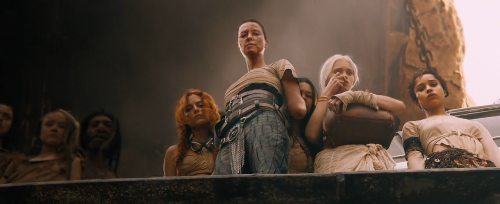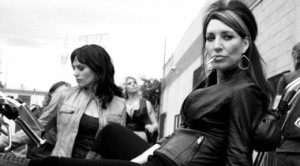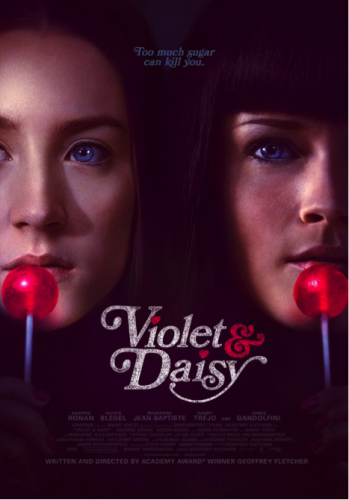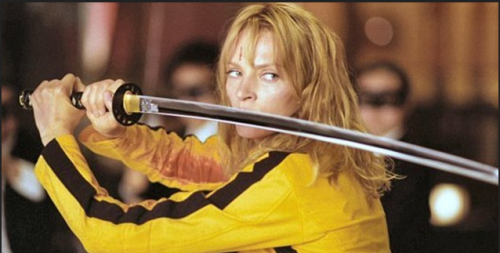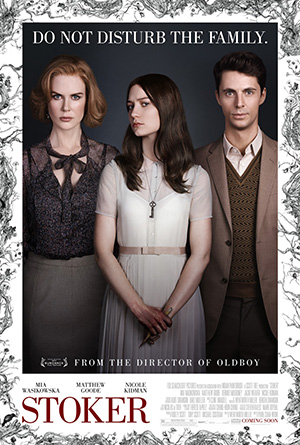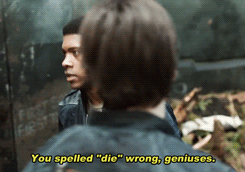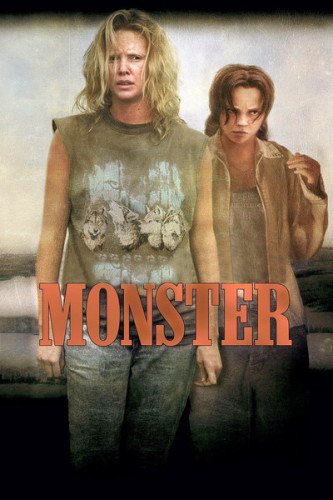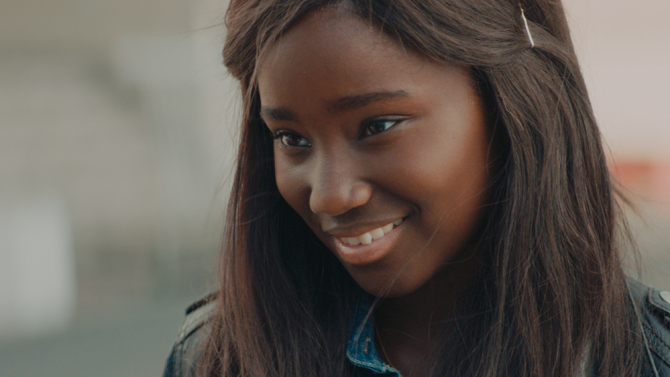This guest post by Katherine Parker-Hay appears as part of our theme week on Violent Women.
When film explores the lives of women who kill, the audience is well-versed in where to locate their corruption: femininity. Think Fatal Attraction’s Alex (1987), Gone Girl’s Amy (2014), the woman shaped alien of Under the Skin (2013). If these figures are evil it is because they choose to act out in ways that contradict traditional views of women. As such they linger on the outside of what is knowable. Again and again, the audience is asked to make intelligible these creatures that don’t quite belong to this world but, as they never quite belong to us, unravelling the secrets of their inner selves is a task that – no doubt intentionally – will forever elude. Patty Jenkins’s Monster is therefore refreshing, bemusing even, because it doesn’t resort to this logic. It refuses this well-worn trope of a female killer whose mysterious inner core we are all so relentlessly on the tail of.
Monster is based on the real life story of Aileen Wuornos, a homeless serial killer who received the death sentence after murdering seven men that picked her up as a prostitute. Wuornos is an enigmatic figure that haunts the public imagination as “America’s first female serial killer” but, rather than rehashing the trope of a mysterious/failed femininity, Jenkins locates Lee’s (Charlize Theron) violence in the fact that she is under pressure to perform both classic femininity and classic masculinity at the same time. Coerced by girlfriend Selby (Christina Ricci), Lee has to be both sole provider and an object endlessly open to exploitation. This pressure is too great for one person. Jenkins’ film charts the excruciating process of Lee crumbling, unable hold the most toxic attributes of both genders together in one body.
The final murder: unable to contain both
Lee finds herself falling for a woman unexpectedly when she stumbles into what happens to be a gay bar and is approached by a naïve and wide-eyed Selby. In the scenes that follow we witness a spellbinding vacuum of roles and Lee, dizzy with first-time desire, soon promises to offer more than she can realistically provide. After a first kiss on the roller skate rink, we quickly cut to the street where the couple are in a hurried embrace behind buildings. Selby has to stop Lee in her tracks, warning that they should find somewhere less public to continue. After offering a nearby yard as a realistic option Lee quickly backtracks, realising that to be with Selby she needs to be ready promise the world. This is an ominous sign of what is to come. Willing to shoulder the burden of classic masculinity, Lee promises to do whatever necessary and they arrange to meet the following evening.
As this scene of erotic discovery transitions into the next, we witness Lee tumbling along the full spectrum of gender – from classic masculinity (unshakable provider, picking up the bill) to classic femininity (vulnerable, able to draw out chivalry from all those around). With the musical score sweeping in to capture the heights of her elation, Lee quite literally spins into the next scene; we roll with her: music still playing from the night before, we see her “hooking” with newfound determination. Her face is steely, ready to take on any role that she might need to in order to accommodate her newfound desires and stay true to her promise. Charlie Shipley makes the point that the musical score of this film doesn’t merely heighten tension as traditionally understood – pop music comes from the world of the characters themselves and marks points where their fantasy lives begin to stretch the bounds of what is ordinarily possible. This certainly appears the case for the poignant transition between these two scenes. In order to surmount the impossible heights of classic masculinity that are now laid at her feet, Lee gathers momentum to beyond herself in an embrace of the hyper-feminine.
Steely with determination: “They had no idea what I could discipline myself to”
Lee understands how to tap into conventional femininity in order to make money. Importantly though, this femininity is not hers in the sense of being derived from some inner core – Lee is able to tune into well-worn tropes circulating society more widely, indeed she is an expert reader of these formulas and draws together a perfect damsel in distress narrative to solicit clients. Her routine is to walk the highway as if a vulnerable hitchhiker and, once inside the cars, she tells of how she is trying to make enough money to get back to her children. She then shows the driver a picture of the kids, his cue to make the chivalrous proposal of an exchange of sex for money. Lee has an exact understanding of how stylised femininity works and pounces upon it, knowing that this is just about the only means, for a woman of her class with dreams as big as hers, to get the money she needs. Hyper-femininity is simply an act that she has trained herself into and this has nothing to do with a mysterious essence that the reader has to bend over backwards in order to comprehend. “The thing no one ever realised about me, or believed, was that I could learn,” she reflects later in the film, “I could train myself into anything.”
However, as the film progresses it becomes clear that Selby is not content living within their means and, at the same time, Lee’s clients are not satisfied by a performance of vulnerability on Lee’s own terms. The men who pick her up are not interested in sexual intercourse alone. They feel entitled to titillating performances of conventional femininity and what’s more they expect her to improvise this free of charge. In one scene we see Lee and a client sitting in the front seats of a car and to Lee’s distress the man is delaying undressing. He badgers her: “Do you have a wet pussy?” Lee looks away and answers with a compliant, “Yeah sure.” “Do you like fucking?” he persists and, unable to draw out the right level of enthusiasm, he says, incredulous, “Jesus Christ, you’d think nobody ever talked dirty to you before.” Lee reassures him with all the energy she can muster: “I just like to settle first you know.” She is unable to keep going to these lengths, yet she is equally unable to disappoint Selby who is waiting for her to return to their motel room cash-in-hand. It is the impossibility of embodying these polar extremes of gender expression that leaves Lee ensnared and desperate. Rather than admit defeat Lee chooses to act out with murderous violence, killing the men who pick her up so that she can take their money.
Roger Ebert has celebrated the way that Theron perfects body language to capture the persona of Lee, writing that the character “doesn’t know how to occupy her body.” As the film goes on, Lee increasingly struggles to hold things together and this discomfort is evoked with every flinch, with every time she meets another’s eye for just that little bit too long. Lee is uncomfortable in her own skin and unable to endure being pulled in both directions. Monster shows a body increasingly stretched, pulled apart by a toxic clash of roles.
Interview: unable to act naturally
Through the character of Lee, Jenkins achieves a dazzlingly fresh approach to women and violence on screen. Watching one woman try and contain so much, trying to be so many different people just to get by, is what makes this film so fascinating. In this narrative we see masculinity float free from any ties to the male body, femininity float free from any easy connection to frailness – we see them meet in the one body of this working class woman to excruciating effect. This is a woman who kills because she is required to embody what so many of us cannot even handle the half of. She takes on all of it, and this proves to be much too much.
Katherine Parker-Hay has a BA in English from Goldsmiths University of London and an MA in Women’s Studies from University of Oxford. She writes on queer theory, women’s cultural output, temporality, and comic serials.
